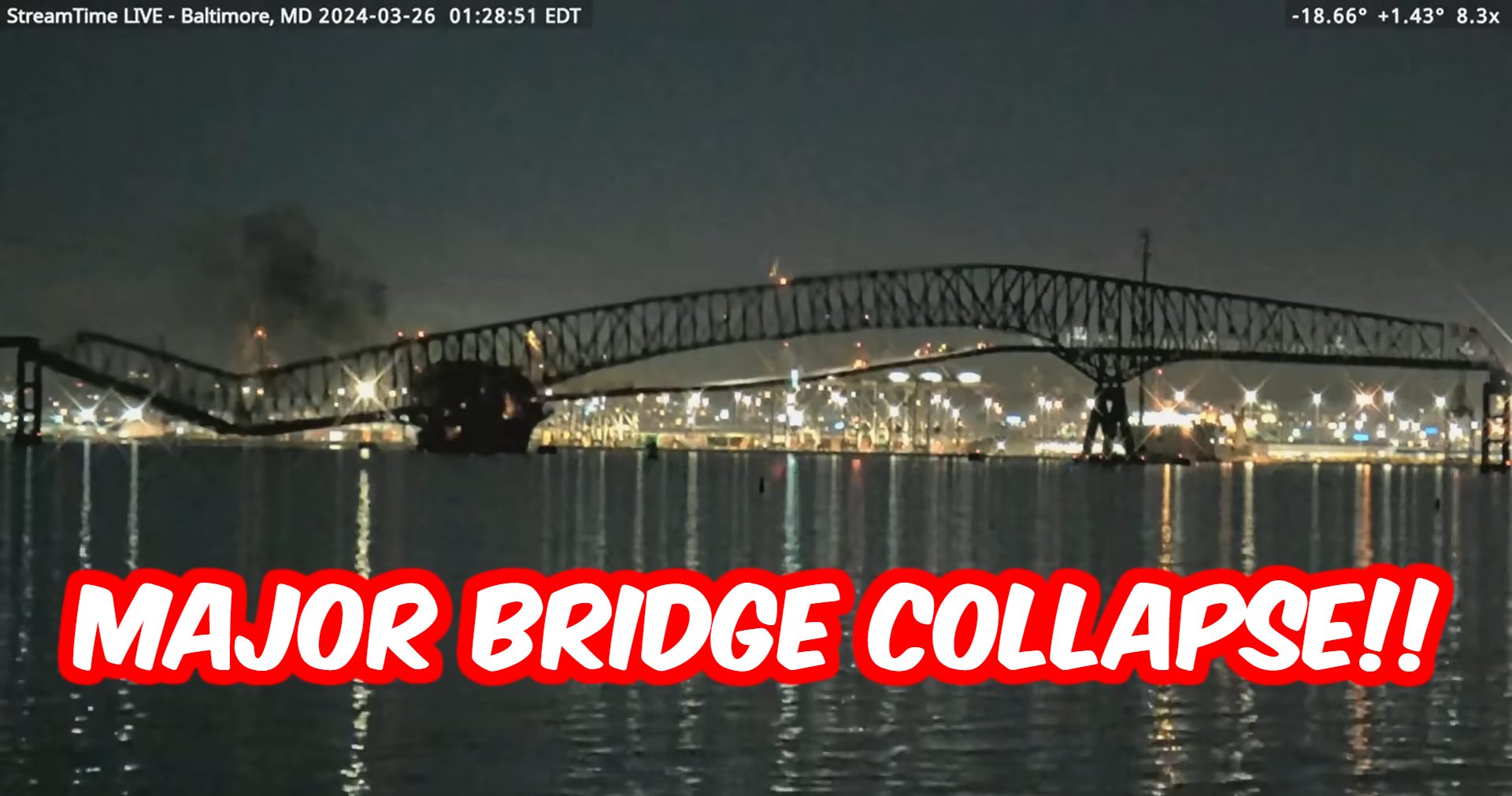The early hours of Tuesday morning in Baltimore turned into a scene of chaos and devastation as a cargo ship collided with the Chesapeake Bay bridge, causing it to collapse. The Francis Scott Key bridge, a vital transportation route, crumbled after being struck by the massive vessel. This tragic event has led to multiple casualties, with vehicles and people plunging into the water. The city’s emergency response teams, including the Coast Guard and local authorities, are currently engaged in a race against time to rescue those in need.
The collapse of the Francis Scott Key bridge was captured on real-time, 24-hour streaming video, revealing the horrifying moment when an explosion occurred at the base of the bridge, leading to its total collapse. As the bridge fell, vehicles were sent crashing into the waters below, resulting in a dire emergency situation. The Baltimore Fire Department and other first responders swiftly initiated search and rescue operations, pulling two individuals to safety. However, there are still seven members of a road repair crew missing, adding to the urgency of the situation.
James Wallace, the city’s fire chief, expressed his team’s determination to locate the missing crew members and vehicles that fell into the water. Utilizing sonar technology, they are scanning the area to locate any signs of the submerged vehicles. The Baltimore Police Commissioner, Richard Worley, stated that there is no indication of intentional collision by the shipping vessel, identified as the 948-foot Dali. The focus remains on rescuing and recovering those affected by this tragedy.
“This is currently a mass casualty incident, and we are searching for seven people who are in the river. This is a dire emergency. Our focus right now is trying to rescue and recover these people.” – Baltimore Fire Department Spokesman
The Francis Scott Key bridge plays a crucial role in facilitating shipping traffic along the East Coast. Its collapse is expected to cause significant disruptions and backlogs in the transportation of goods, particularly in the region between Washington, D.C., and New York. Baltimore, as the ninth-largest port in the country, handles a substantial amount of international cargo, worth over $80 billion last year alone. The repercussions of this incident are likely to reverberate throughout the mid-Atlantic region, affecting the flow of goods and impacting the local economy.
As news of the bridge collapse spread, Baltimore Mayor Brendon Scott assured the public that emergency personnel were on the scene and actively engaged in managing this mass casualty incident. Efforts are underway to assess the full extent of the damage and determine the cause of the collision. The National Transportation Safety Board (NTSB) will conduct a thorough investigation to shed light on the circumstances that led to this catastrophic event. The findings will be crucial in preventing similar incidents in the future and ensuring the safety of vital transportation infrastructure.
Rebuilding and recovery efforts will be a complex task, requiring substantial resources and expertise. The city, along with state and federal agencies, will need to work together to assess the damage, devise a comprehensive plan for reconstruction, and allocate the necessary funds and manpower.
Tragic events like the bridge collapse in Baltimore serve as reminders of the importance of maintaining and continuously upgrading critical infrastructure. The incident highlights the need for rigorous safety protocols and regular maintenance inspections to ensure the structural integrity of bridges and other transportation assets.


Leave a Comment